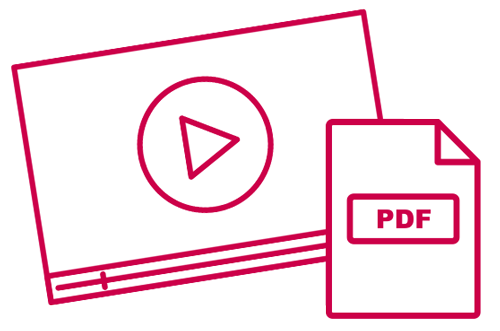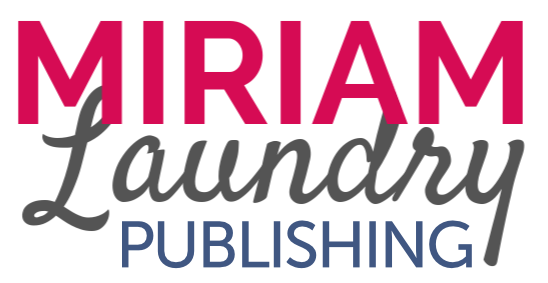So you’ve taken the plunge. You’ve finally decided that you’re ready to put your ideas down on paper and get your story out there. But there’s just one problem: you don’t know how to start writing.
In this blog, I’m going to tell you how.
Before You Start Writing
There’s something you should know before you learn how to start writing. If you’re anything like I was when I wrote my first children’s book, then you’re probably looking for the exact instructions to begin writing and stay motivated throughout it all.
As much as I would love to provide them for you, those magic instructions simply don’t exist. Every writer thinks and works differently. What works for someone else might not work for you.
However, I can give you options in hopes that one of them will spark your inspiration and kickstart your writing career.
And when it comes to staying motivated, you can read my blog post about it HERE.
How to Start Writing a Children’s Book
Method #1: Write, write, write!
This may seem like the obvious choice, but it often goes overlooked. Lots of writers start out with a vague idea of what they want their book to be about and then instantly put pen to paper.
These kinds of writers are commonly known as “pantsers”, because they write by the seat of their pants. They let creativity take over and allow the story to move however it decides.
If you’re wondering how to start writing a children’s book, this could be a great option for you.
However, many authors need some more structure.
Method #2: Create an Outline
If the idea of jumping right into your first draft overwhelms you, odds are you need to start with a structured outline.
(Writers who use this strategy are often called “planners”.)
Here’s how to start writing a structured children’s book outline.
You need to sit down and plan out these pillars of your children’s book:
- The Message
- The Problem
- 3 Roadblocks or Checkpoints Your Main Character Must Encounter
- The Solution
- A Satisfying Ending
The Message
This is the main theme or lesson you want readers to learn by the end of the story. The message plays a huge role in knowing how to start writing your children’s book.
For example, in my children’s book I CAN Believe in Myself, I want children to learn that they CAN do anything they set their minds to as long as they keep trying.
“I can speak in front of the class because … I believe I can!”
— Molly, I CAN Believe in Myself
Once you have your message, write it down somewhere you’ll see it whenever you go to write. The message is the foundation of your story, so you’ll need to have it in mind throughout your writing process.
Then, you can move on to the problem.
The Problem
Every story needs two things: a problem and a main character who wants or needs to solve that problem.
In Harry Potter, Harry must defeat Voldemort and his followers to save the world from impending doom.
In The Very Hungry Caterpillar, the caterpillar must eat enough food so that he has enough strength to turn into a beautiful butterfly.
In The Lion, the Witch and the Wardrobe, the Pevensies must save their captured brother, Edmond, and help Narnia defeat the White Witch in her attempts to overthrow the land.
As the main character(s) solves that problem, a story is born.
The good news is, if you already have the message figured out, outlining a problem is simple. All you have to do is take the message and think of its opposite.
For example, in I CAN Believe in Myself, the message is that children should have confidence in themselves. So, the problem is that Molly doesn’t believe in herself and is afraid of speaking in front of her class. So, she must grow her confidence throughout the story and deliver her presentation by the end of the book.
Once you’ve established a relatable problem, you can learn how to start writing the story, piece by piece.
3 Roadblocks or Checkpoints
So you have the message and the problem, but now you need to turn those things into a story, and every story needs roadblocks or checkpoints.
Think of your favourite book or movie. Now, imagine if the main character could solve the problem without any struggle.
For example, if Harry Potter could simply snap his fingers and remove his Defense of the Dark Arts teachers from existence, the story would not only be terribly short, but also quite boring.
Interested in Writing a Children's Book?

If you want to know how to start writing an entertaining story, you need to plot out some roadblocks or checkpoints.
Throw things in your main character’s way. Make their journey to the solution as difficult as possible. Then, you’ll see your story come to life.
But of course, at some point your main character must prevail, leading you to the solution.
The Solution
This is exactly what you think it is: the moment your main character faces the problem head-on and solves it.
In The Very Hungry Caterpillar, the caterpillar cozies up into his cocoon and turns into a butterfly.
In Harry Potter and the Philosopher’s Stone, Harry defeats Professor Quirrell.
In The Lion, the Witch and the Wardrobe, Peter and his siblings help guide the Narnians in their fight against Jadis, and Aslan delivers the final blow, ending Narnia’s everlasting winter.
As you understand how to start writing a strong solution, make sure the child is the one who saves the day. After all, most children don’t want to read a story where the child is cast aside and an adult steps in to make everything better.
A Satisfying Ending
You know how to start writing an impactful message, a relatable problem, three roadblocks or checkpoints to make your story entertaining, and a meaningful solution.
Now you need to craft a satisfying ending. In other words, you need to leave your reader with a smile.
In Harry Potter and the Philosopher’s Stone, there is a final celebration scene as Gryffindor wins the House Cup and Harry anticipates his next school year at Hogwarts.
In I CAN Believe in Myself, we see Molly’s teacher step up to the front of the class and overcome her “I can’t” statement: “I can’t make it through the morning without my coffee!”
You can do this by circling back to something that happened earlier in the story or describe a scene where we can see the main character and their friends enjoying their new life.
Then, you’ll have a solid children’s book outline, and you’ll know exactly how to start writing your children’s book.
Depending on how much structure you need, you can make your outline more detailed or less detailed. The ball is in your court!
Method #3: Become a “Planster”
Though it’s not as common, there are many writers who like having the freedom “pantsing” provides, but they still need a general direction to guide them.
These writers are called “plansters”, because they combine the strategies of “pantsers” and “planners”.
If you go with this method, you can have your problem and solution figured out, but make up the roadblocks along the way. Or you can do the opposite.
Really, the decisions are yours. Just know that, when it comes to knowing how to start writing a children’s book, you need to do what feels right.
Then, you’ll be sure to produce a draft you’re proud of.
Need a community to spur you on? Join my FREE Children’s Book Writers Community
Who can help you get started, navigate your biggest questions, and celebrate your success?


